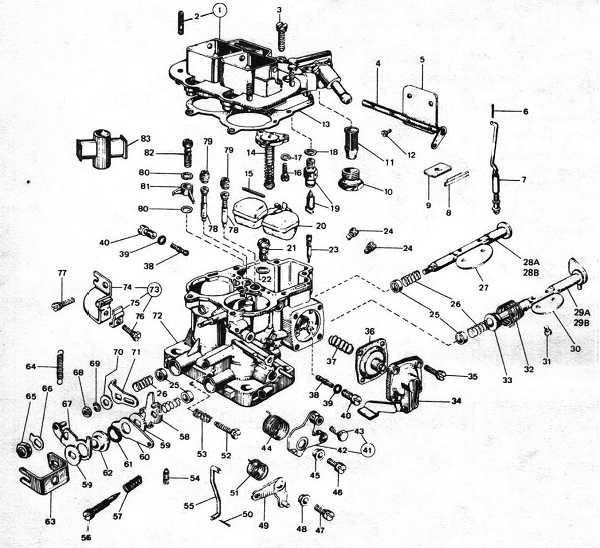
ok, im helping my best friend out on his 82 b2000. ive known him and this truck since high school (~15 years). anyway, weve been trying to get it running right again. the origonal motor was way down on compression, at around 60% leakdown within 2 seconds on 3 cylenders. figured that was wgy it was running poorly and feeling like it had a miss at idle.
vhanged it out for a low milage engine. leakdown was great, ran all the valves, etc.
fires up and runs great at wide open throttle. at idle, it still feels like its missing.
were pretty sure that weve chased it down to the carb. its the only part thats the same between the two motors, and the two motors are behaving in exactly the same ways. (well, except for smoking and having very little power on the old motor)
so im looking into a weber conversion on this truck for him. he has no time to do research himself.
ive found a bunch of stuff on the later model trucks, but realitively little on the earlier models.
what all am i looking at here? were trailering the truck to my shop, so i can work on it at my leisure.
anyone have any links, kits, etc for a weber conversion? something better? id go with a factory reman, but all three of theones that ive ordered from the local parts houses were junk. i wouldnt even send them in for a core, let alone put them on amotor.
so please, send me some advice on this. its a bone stock, 5 speed, 1982 mazda b2000 sundowner.
michael

Redline makes a kit, it's an adapter plate which puts the staged 2 bbl 32/36 on the stock intake. http://www.ebay.com/itm/Mazda-Pickup-1979-1984-B2000-Weber-Carb-Conversion-Kit-trucks-Rod-linkage-/270892506695?_trksid=p4340.m263&_trkparms=algo%3DSI%26its%3DI%252BC%26itu%3DUCI%252BUA%252BFICS%26otn%3D15%26pmod%3D270828997003%26ps%3D63%26clkid%3D5633393164146746969
Before you go much further, look real carefully for vacuum leaks. Those old Hitachi and Mikuni etc early smog carbs are very vacuum sensitive make sure there are no open vacuum taps on the intake and the carb. If it has power brakes, pull the booster hose off and plug the intake fitting, if it runs a lot better he has a bad booster and a carb won't fix that. Usually (not always) with a bad booster you hear a hiss under the dash with the engine running.
Shoot a little carb cleaner just behind the throttle lever, if it runs either a lot better or a lot worse the throttle shaft and bushings are worn out and at that point yeah the Weber is his best bet.
im almost certain that its the carb, but wont be spending a dime until a FULL and thorough diagnosis is done. my nbest friend is a car guy, but hes more of an Rand R type. im more of a fab/rebuild/repair/upgrade/etc kind of a guy. if its just R and R, i really dont feel like messing with it.
any good weber guys out there that can chime in?
i really dont understand all the different nomenclature thats on these things. quite baffling. i understand the 32/36 is in reference to the bore size of the barrels, but after that, im lost.
remember, im an american carb guy. i know carters and holleys like the back of my hands. messed with a few mekunis back in the late 90's, but not a lot.
so fill me in on the deal with this whole weber thing.
michael

Easy carbs to work on. The 32/36 is a staged 2bbl, think of it as if you split a Holley mechanical secondary spread bore down the middle and used only one half.
Exploded drawing:

It has a diaphragm type accelerator pump almost exactly like a Holley. The main jets are in the bottom of the float bowl, there are air bleed jets for the main fuel circuit in the main venturi.
The idle jets are in the sides of the carb, under brass screws. Take that out and the idle jet is in the end of the holder.
The idle screw should be between 1 1/2-2 1/4 turns out from full in and it works just like a Holley: in is leaner, out is richer. So if it's less than 1 1/2 turns out to get a decent idle you need richer idle jets, over 2 1/4 turns you need leaner. That's a pretty critical adjustment, if the idle screw is not in that range there will probably be a flat spot just off idle. I've always found 1 3/4 out to be just about perfect. It's pretty rare to need to rejet one, though; I have only needed to do it once.
Other than that they are pretty simple. It will have a ported vacuum tap for distributor vacuum in the base plate, Holley puts that in the front metering block for whatever reason.
DGVs hold up to fire really well in my experience. 






























